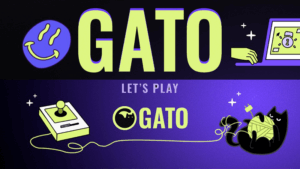Audio determines what we see. The same scenario depending on the music used can result in totally different emotions. We must pay attention to it so as not to fail during its development!
I will simplify it as much as possible: There is a notorious paradox between the perceptible quality of what we hear versus what we see on the screen. If the perceived audio is well done our brain does not differentiate it as a separate fact but rather adheres to the visual and the interaction of events.
The paradox is that the more functional and correctly performed / incorporated is the quality and quality of the sound that we hear (whether they are sound effects or incidental music) in relation to what we see, the less noticeable is its presence and therefore less conscious we are of its existence. Sound should go unnoticed in order to achieve its basic function: add value with what you are interacting with. Thus our brain decides (unconsciously) to pay attention to other things: anticipate enemy moves, be attentive to unexpected reactions, plan and prepare for future events, think strategies, etc.
Audio conditions what we see
If you failed to perceive the difference between one repetition and the other (example 1) it is because the sound and audio editors did their job well (And here is the paradox again). And if you managed to notice the difference Bravo! You are understanding what this article is about.
In example 2, the music is changed to the same scene, few of the examples are pleasant (in this case it serves as an example to see how the music can also NOT help) although the “action” music example fits well, when the character walks “hard”.
From sound cliche to selective subtlety
Now the problem arises when we must cover more specific aspects. Like it or not, visual audio culture has shaped an immersive historical context that socially speaking, we have absorbed over time; conditioning in a way the creativity of those who dedicate themselves to it. An FPS action game, it will demand action music. An adventure game will demand the use of natural sound environments, “happy” or neutral music, leaving room for changes when danger arises. A horror game will demand the use of silences or strange sound environments; and a war game, a forceful orchestral music with brilliant and epic brass.
Getting to elaborate these “cliches” is not easy at all, on the contrary, they require a lot of study, knowledge and handling of cultural elements. But here lies a possible creative “new premise”: breaking with these schemes playing creatively with the listener’s expectation and trying to achieve something “more than expected” from the sound, understanding that music can and should not only accompany the event visual in question it can also do more than that.
This new premise has been incorporated by several development companies. As an example we can talk about the renowned game The Last of Us from the Naughty Dog studio (2013). In this “action-adventure and survival horror” game it was sought from a minimalist hint to conceive the sound and music of the game as something that provides greater value than a “cliche” scheme could contribute to the genre addressed. The premise was strong: do more with less. Thus they managed to generate soundscapes with unconventional resources using and thinking about each sound not only in terms of what is visually perceptible but also going beyond its relationship with the narrative, with the emotionality of the characters with the anticipation of events, etc.
Some real context
Development times, limited budgets and constant competition in this industry mean that rapid “cliches” are required to achieve a functional product. From a creative point of view this usually conditions a lot not to mention that this type of final decisions are made by superiors who in general, do not play to exploit and explore the sound potential during the development process but rather who decide to play it safe (a totally wise decision, by the way, since there are time and cost / versus profit demands involved).
But this is still a condition for those passionate people in the industry who decide to go beyond the conventional even knowing that it may not work. It is here where the artistic elaboration of the product is appreciated and valued, regardless of whether or not it complies with the “cliches” that we know so much.
In a conclusive way
Music and sound effects determine the user experience. When you have the possibility to exploit this resource do not limit yourself! The results can be great.
We hope it has been useful to be aware of future publications we invite you to follow us on our social networks!




No comment yet, add your voice below!